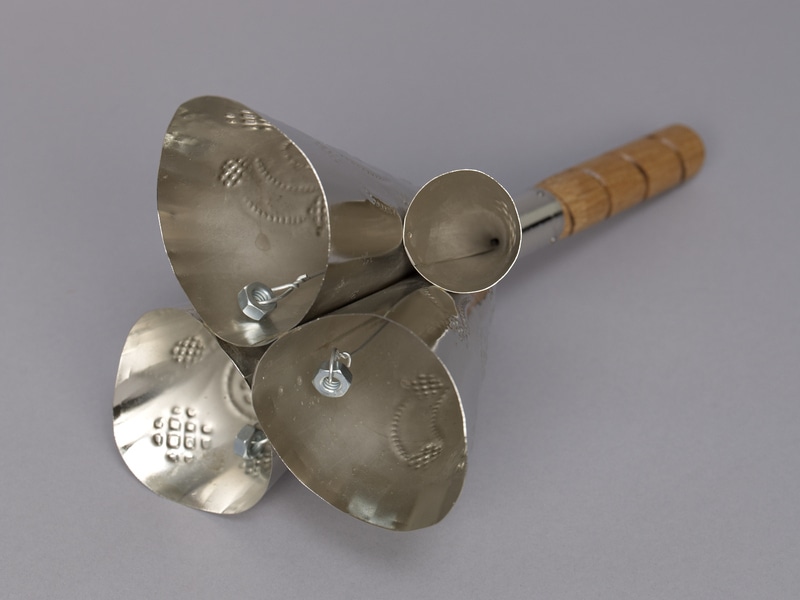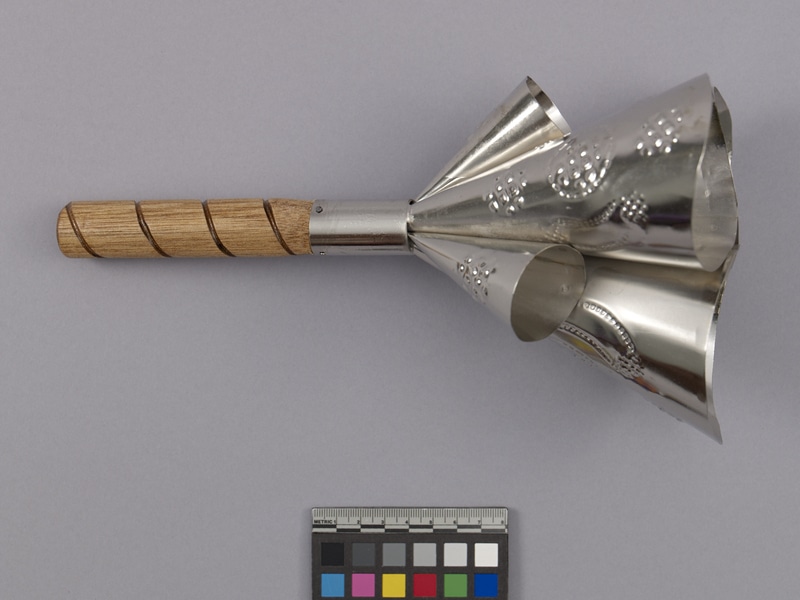Rattle Item Number: 3041/6 from the MOA: University of British Columbia


Description
Rattle made of six cones of tin attached to a wooden handle. The cones consist of different sizes, three wide and long, and three shorter and smaller in diameter. All are crimped at the handle, where they fit into a metal ring that joins them to the handle. Each cone widens toward the base. The larger three contain a wire hung with a metal nut as a clapper. The cones are decorated with circle and line motifs pressed into the tin. The wooden handle has an engraved line that spirals from end to end.
History Of Use
The adjá is a primary liturgical instrument of the Afro-Brazilian religion Candomblé. During Candomblé ceremonies it is used for several purposes: to indicate the beginning of a ceremony, to call the orixás, to guide those who perform the dances, and to keep the orixás’ energy in the terreiro (sacred ground). It can only be played by those who have become yawôs after completing the first seven years of Candomblé education. The yawô is presented with the right to use the adjá by an orixá during a public ceremony, after which they become an “Adjá Hand.”
Cultural Context
religious; ceremonial
Narrative
This item is part of a set, acquired from the O Mundo dos Orixás shop, Madureira Market, in Rio de Janeiro.
Item History
- Made in Rio de Janeiro, Brazil during 2013
- Collected by Nuno Porto during November 2013
- Owned by Mundo dos Orixas before November 22, 2013
- Received from Mundo dos Orixas (Seller) and Museum of Anthropology Acquisitions Budget (Funding source) on November 22, 2013
What
Who
- Culture
- Brazilian
- Field Collector
- Nuno Porto
- Previous Owner
- Mundo dos Orixas
- Received from
- Mundo dos Orixas (Seller) and Museum of Anthropology Acquisitions Budget (Funding source)
Where
- Holding Institution
- MOA: University of British Columbia
- Made in
- Rio de Janeiro, Brazil
When
- Creation Date
- during 2013
- Collection Date
- during November 2013
- Ownership Date
- before November 22, 2013
- Acquisition Date
- on November 22, 2013
Other
- Condition
- good
- Accession Number
- 3041/0006